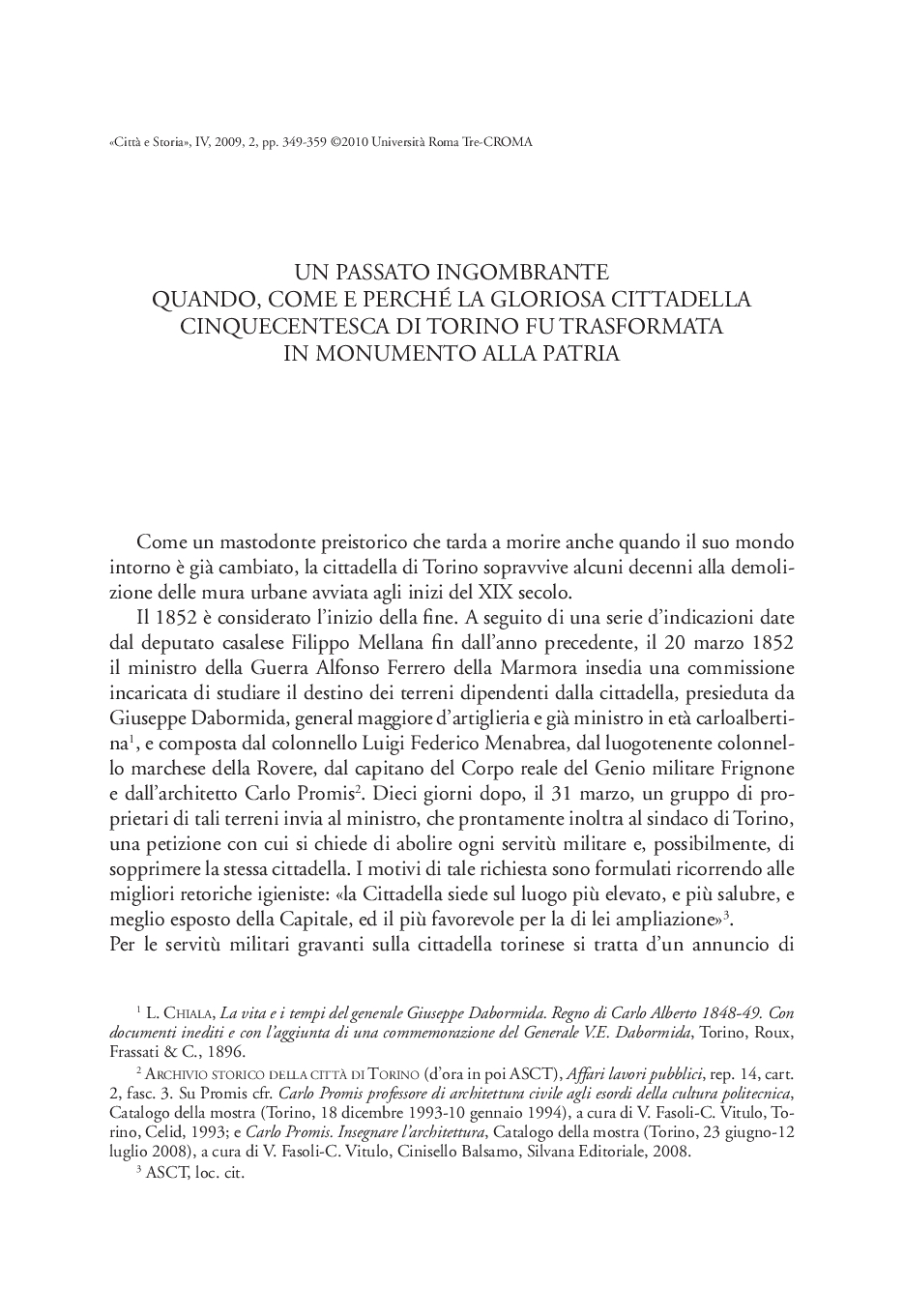Indice degli autori
CITTÀ & STORIA » 2009/2 » Spazi e cultura militare nella città dell'Ottocento
ISSN 1828-6364
Pace Sergio
Un passato ingombrante. Quando, come e perché la gloriosa cittadella cinquecentesca di Torino fu trasformata in monumento alla patria
pp.349-359, DOI 10.17426/97419
Articoli
Abstract: In the mid-19th century the citadel of Turin, built in 1564-1566 by Francesco Paciotto for Emanuele Filiberto duke of Savoy, was still a magnificent military fortress. Nevertheless, major political and military reasons as well as the gradual but unavoidable urban development condemned it. Between 1846 and 1864, at the end of a long and controversial process, a large part of it was destroyed: at its place, many elegant houses for the emerging urban bourgeoisie and the headquarters of the Carabinieri were built.
Apparently, nothing new was happening: many European cities were being built upon the ashes of their military premises. But this was not just an(other) episode of urban renewal. The glorious building was demolished, new streets and avenues, new houses and barracks were accompanied by a large number of brand new monuments, dedicated to old and recent national heroes, from the prototype of the Savoyard soldier – Pietro Micca (1677-1706) – to those who were making possible the dream of unified Italy. The physical change of the city fabric can also be seen through the unprecedented symbolical change, induced by the monumentalization of the urban space. To remodel the city meant to rename it and many statues were asked to be the witnesses of this process. The past was recalled in order to live and interpret the present: (once again) the city of Turin testified a continuity within the change.

Referenze
- download: n.d.
- Url: http://archivio.centroricercheroma.it/?contenuto=indice-degli-autori&idarticolo=898
- DOI: 10.17426/97419
- citazione: S. Pace, Un passato ingombrante. Quando, come e perché la gloriosa cittadella cinquecentesca di Torino fu trasformata in monumento alla patria, "Città & Storia", IV/2, pp.349-359, DOI: 10.17426/97419

